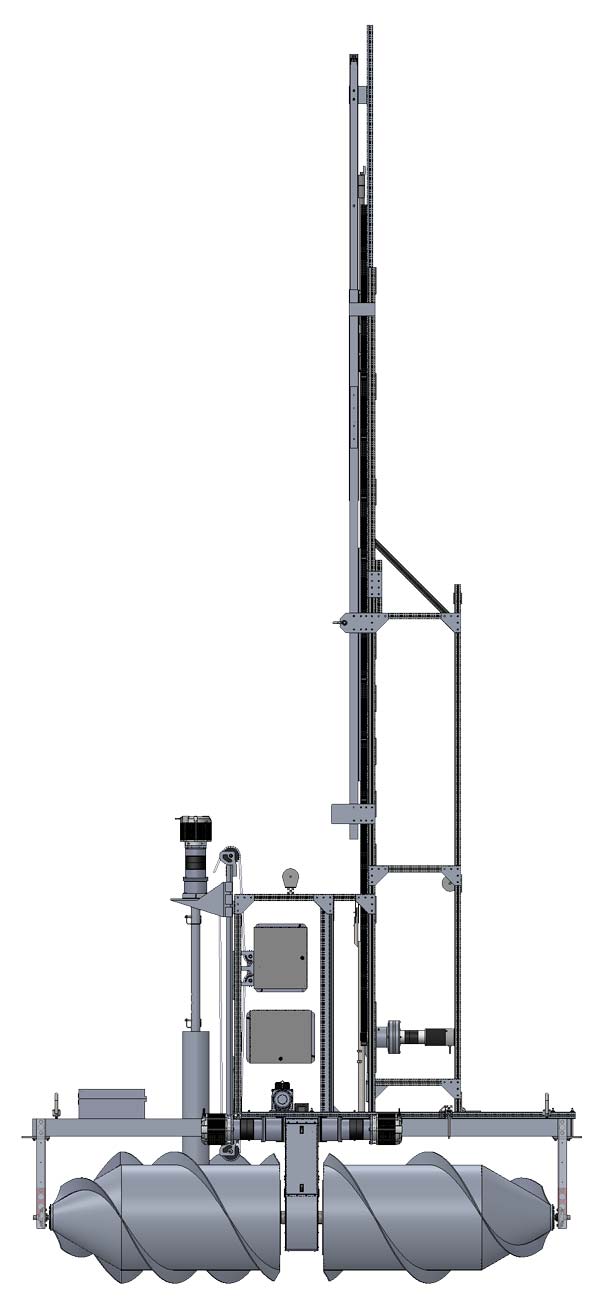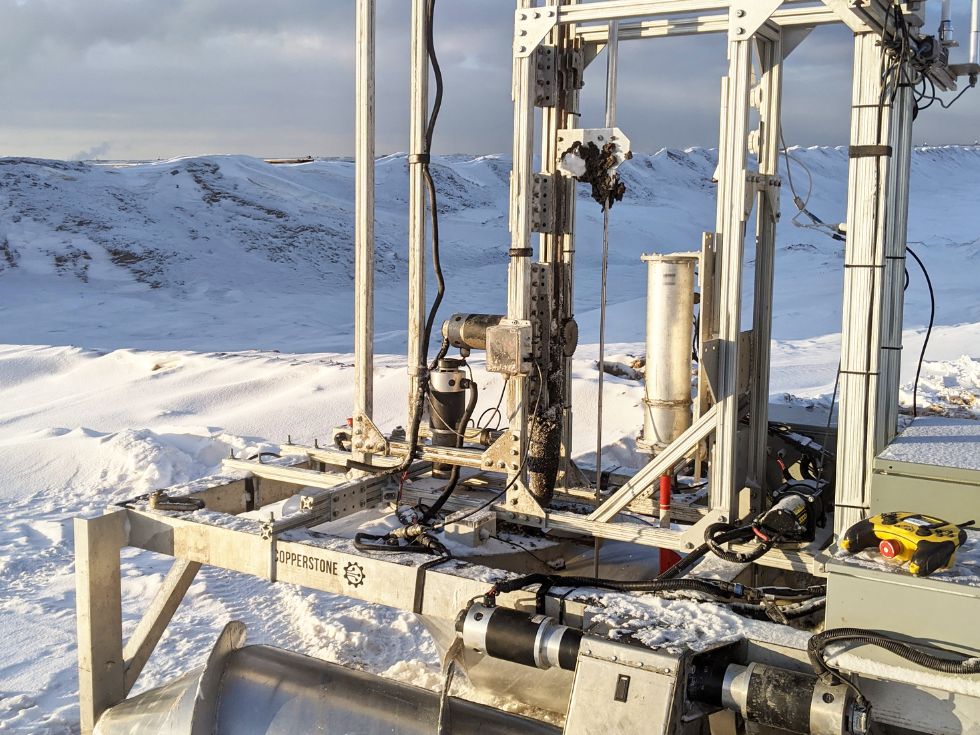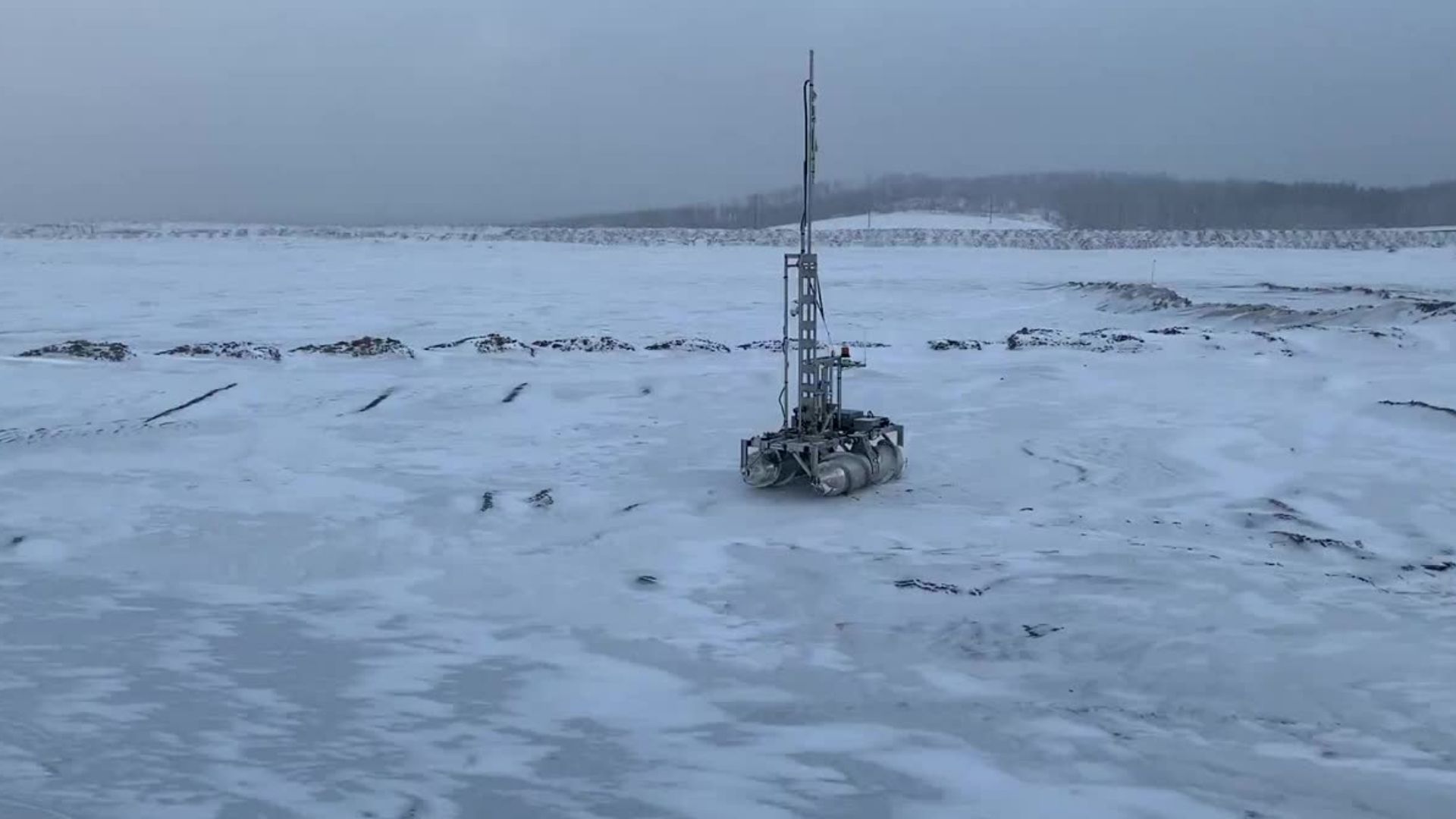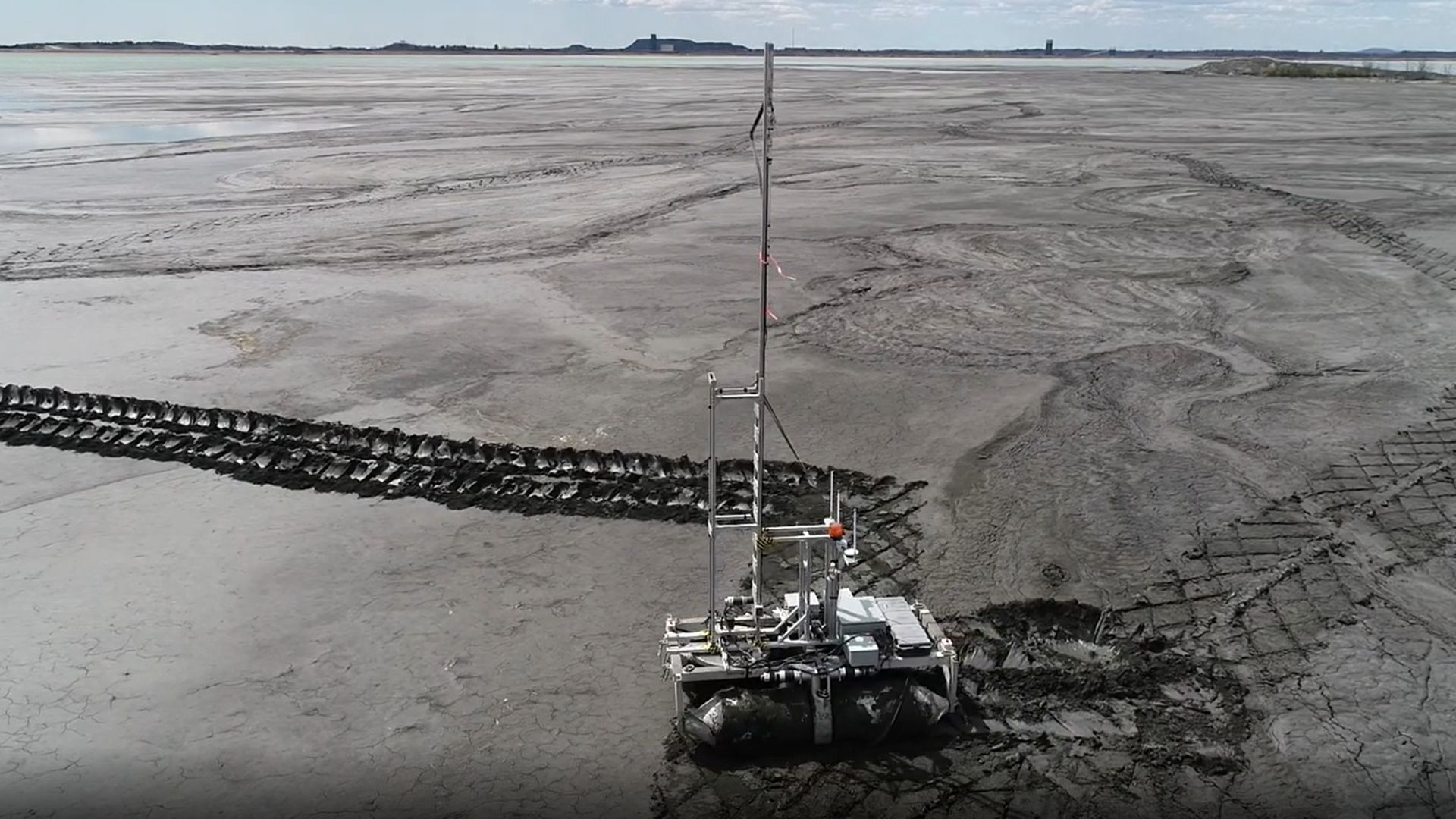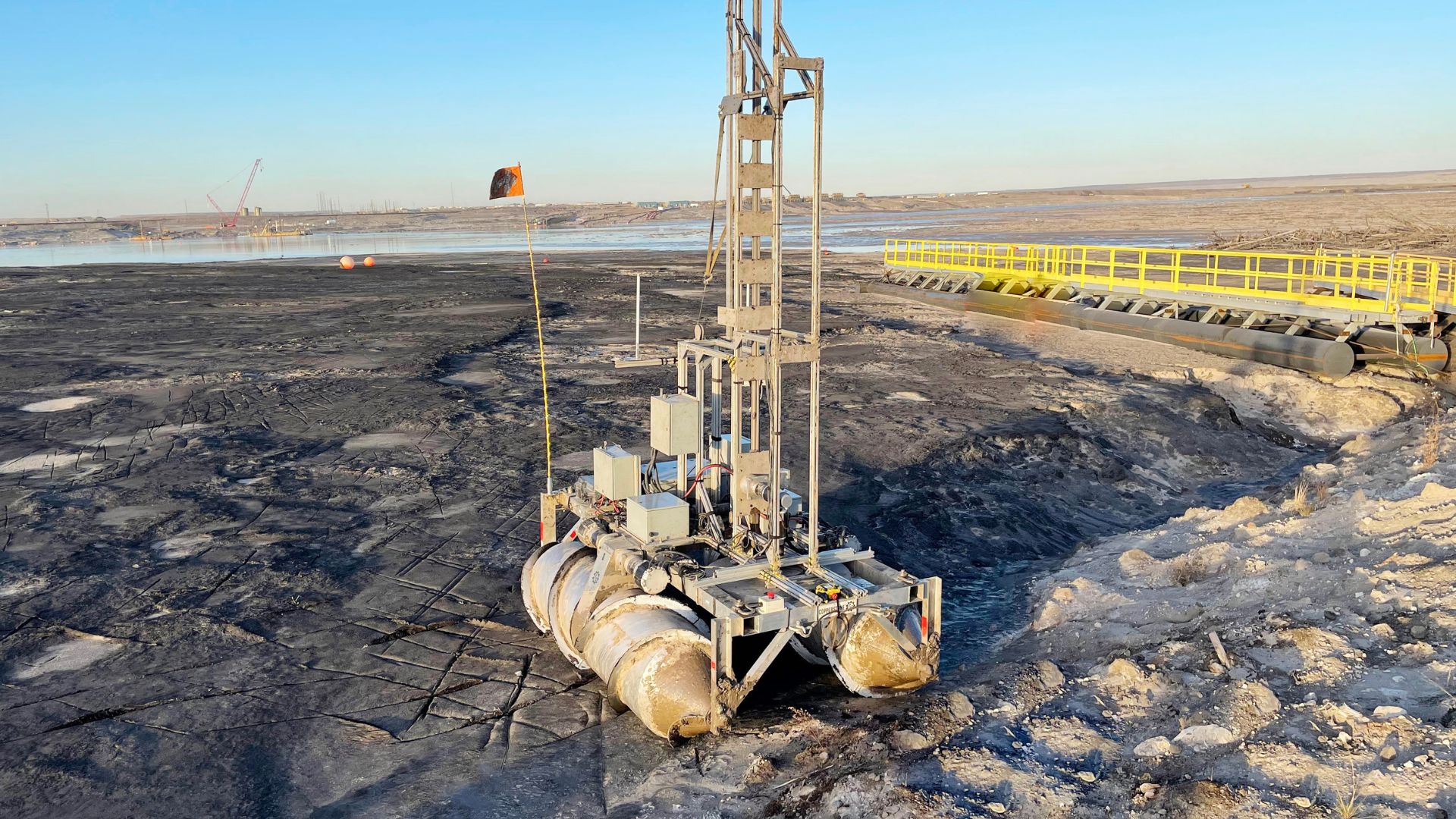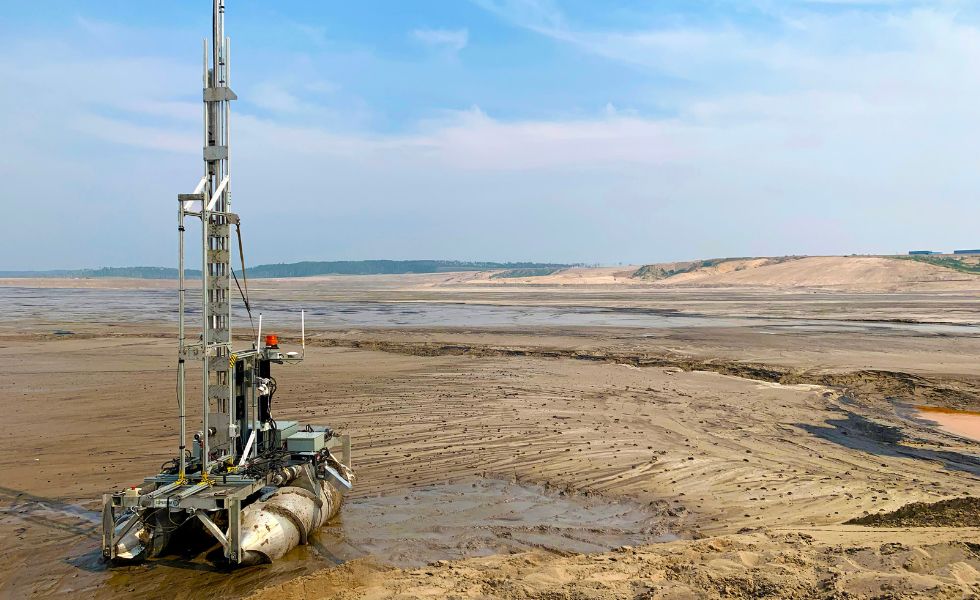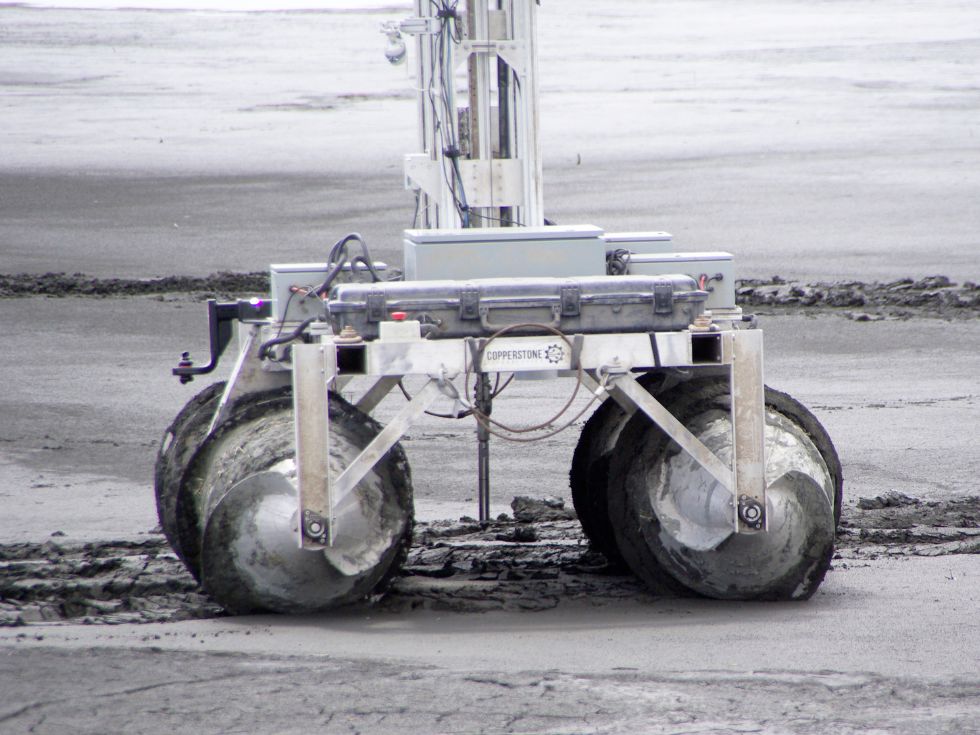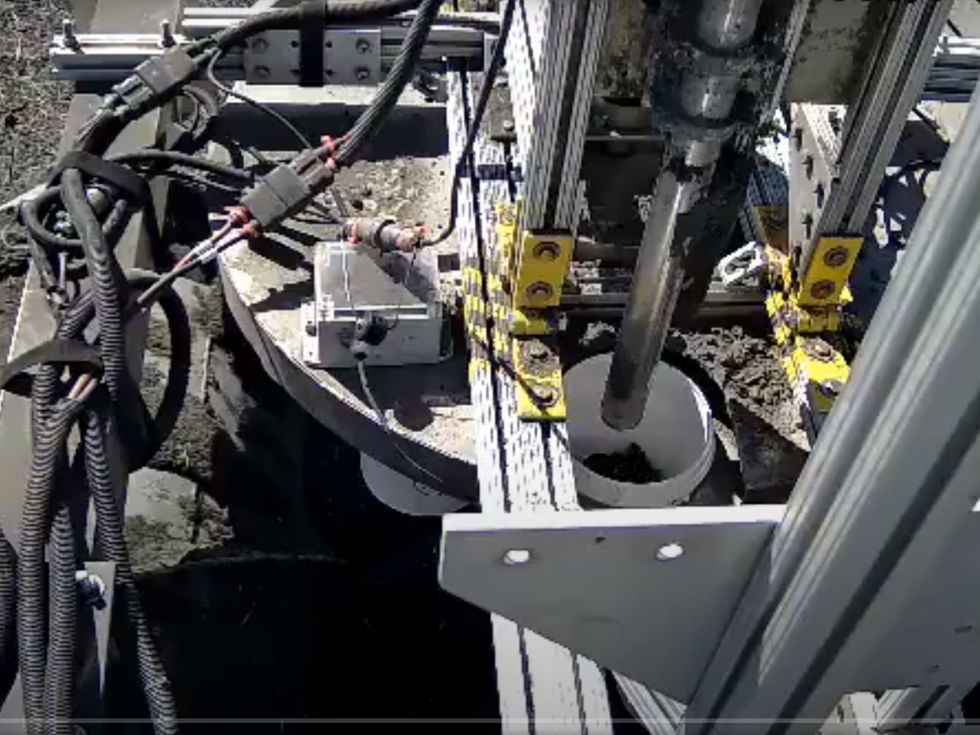The unmanned HELIX Mercury is a 1-ton amphibious robot designed for advanced data collection and environmental monitoring in challenging conditions. Featuring a robust central payload deployment system, Mercury enables the installation of deeper and more sophisticated sensors for precise subsurface investigations. The patented screw-drive technology combines pontoons for flotation with helical grousers that act as efficient propellers in water and versatile traction devices on soft or solid ground. Mercury is engineered to navigate the diverse terrains and seasonal extremes encountered in tailings and hazardous environments, providing reliable access to mission-critical data. Part of the HELIX family, this next-generation rover builds on proven screw-drive capabilities, offering unparalleled stability, mobility, and adaptability for demanding field applications.
